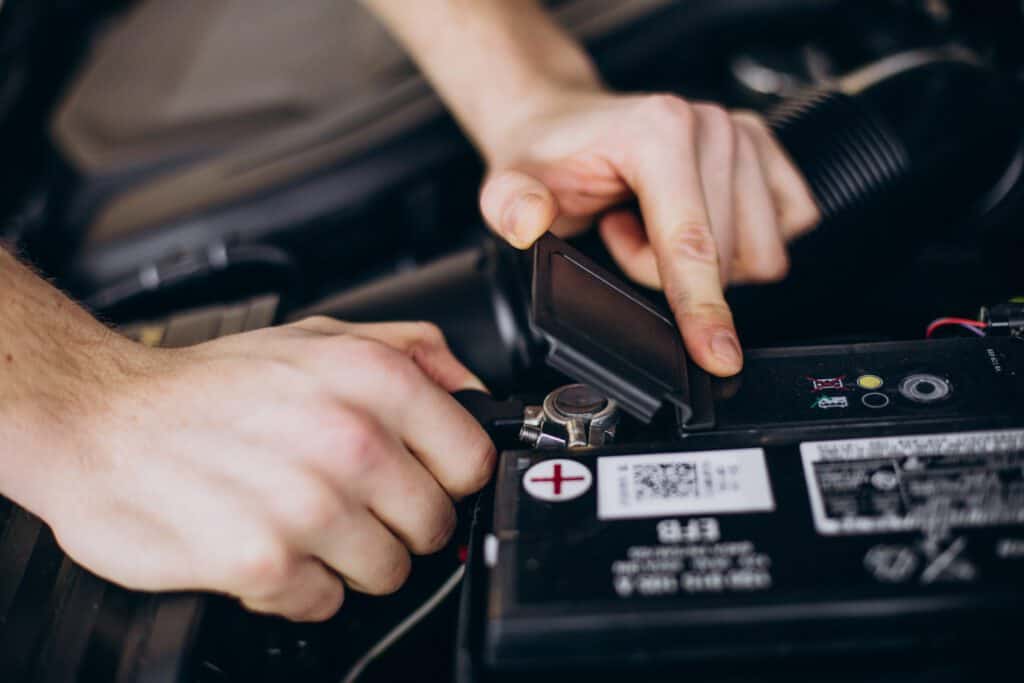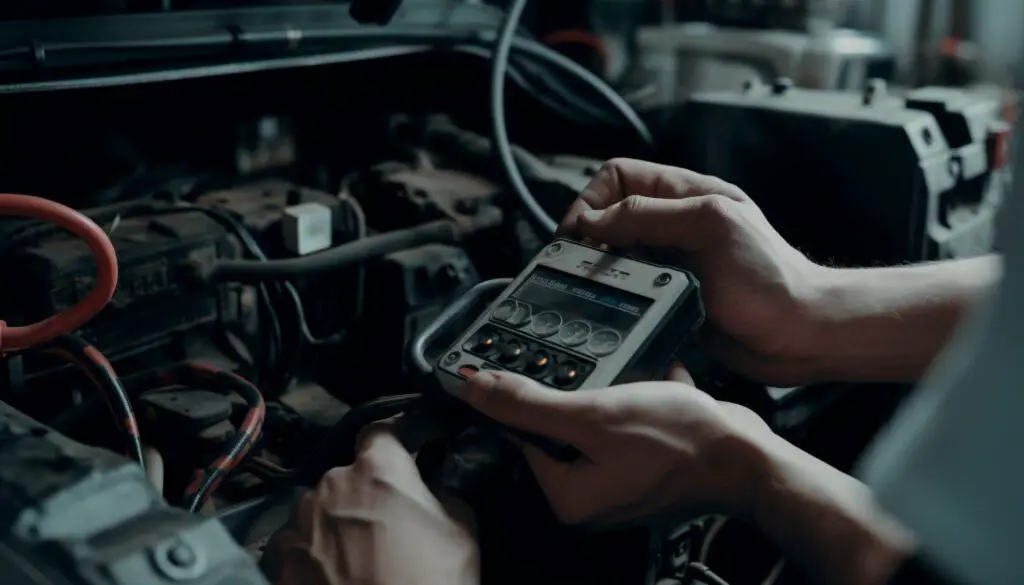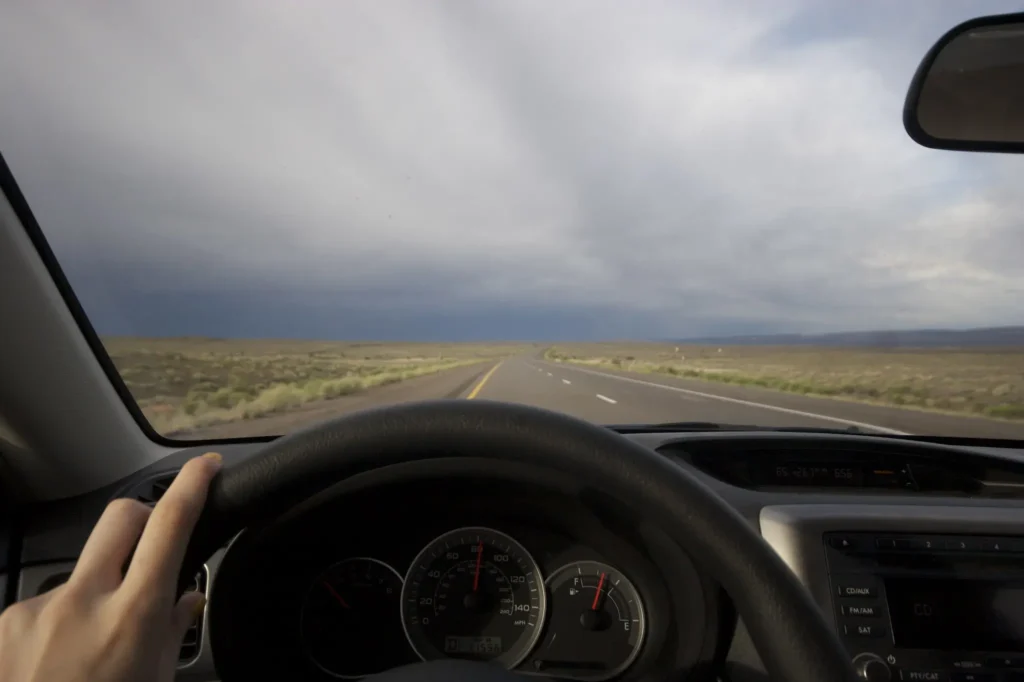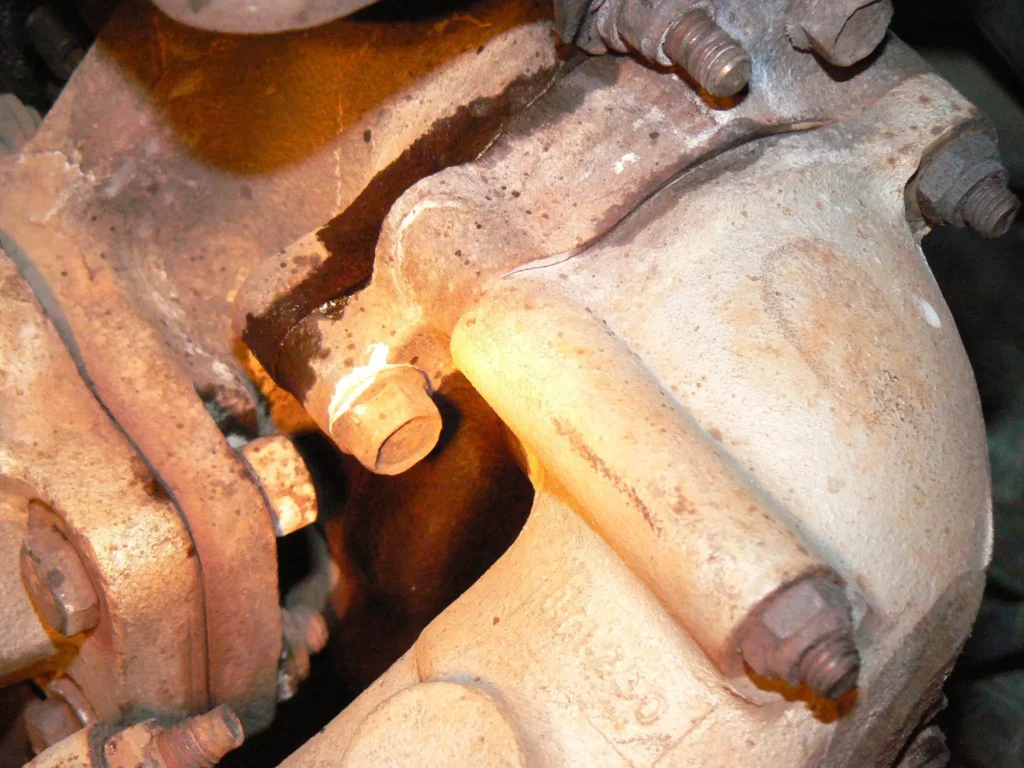Finding your car won’t start when you need to get somewhere urgently is incredibly frustrating. More often than not, the culprit is a faulty starter motor. Don’t panic just yet – while a bad starter stops your engine from turning over, there are ways to get your car going using some simple tricks.
This comprehensive guide will walk you through various techniques How to Start a Car With Bad Starter? . We’ll also explore common starter problems, symptoms of a failing unit, and tips to prevent starter failure. Let’s get your engine revving!
What is a Starter Motor and How Does It Work?
Before learning how to bypass a bad starter, it helps to understand what it does. The starter motor is an electric motor that cranks your engine to life when you turn the ignition key or push the engine start button.
Here’s a quick rundown of how the starting system works:
- The ignition switch sends power from the battery to the starter solenoid when turned to the ‘start’ position.
- The starter solenoid is a relay that engages the starter motor. It has a movable arm that makes an electrical contact, sending current to the starter.
- The starter motor has a small gear that meshes with a larger gear ring attached to the flywheel. When powered, it turns the flywheel and cranks the engine.
- After the engine starts, the starter disengages from the flywheel. The solenoid’s contacts open to stop power flow to the motor.
Now that you know how a starter functions, let’s examine why it fails.
Common Causes of Starter Motor Failure
How to Start a Car With Bad Starter? Like other car parts, starters can wear out over time. But several issues can contribute to premature failure:
1. Electrical problems
Faulty wiring, loose connections, bad grounds, blown fuses, etc. disrupt the power supply to the starter. Insufficient current prevents proper cranking.
2. Mechanical wear
The brushes, armature, bushings, bearings, and other internal parts suffer friction over thousands of starts. Eventually, they wear out and stop working efficiently.
3. Engine oil leaks
Oil leaks from worn seals/gaskets can drip on the starter, damaging windings and internal components. The grease also attracts dirt and debris.
4. Damage from over cranking
When the battery charge is low, the starter has to work extra hard to crank the engine. Prolonged cranking overheats and damages the motor.
5. Corrosion buildup
Corrosion on the battery terminals, solenoid contacts, starter terminals, etc. increases resistance and impedes current flow. This starves the starter of power.
6. Bent/chipped flywheel ring gear
If the flywheel gear that the starter drives has damaged or missing teeth, the starter pinion gear slips. This prevents cranking.
7. Solenoid failure
Faulty solenoid contacts can prevent the motor from engaging or disengaging properly after startup. This leaves the starter stuck in the running position.
Regular maintenance can minimize premature starter failure. Now let’s see how to get your engine running with a bad starter motor.
How to Start a Car With a Bad Starter
When your starter motor is shot, How to Start a Car With Bad Starter? here are some effective tricks to bypass it and start the engine:
1. Check the Battery and Cables
Before you conclude the starter is bad, first inspect the battery. Loose or corroded cables and dead batteries are common ‘no-start’ causes.
- Check that the battery terminals are clean and tight. Remove any corrosion.
- Ensure the positive and negative cables are securely fastened to the battery and starter.
- Use a multimeter to check battery voltage. It should be 12.4-12.7 volts when fully charged. If low, charge the battery or jumpstart the car.
- Verify the battery cables are in good condition. Replace if the insulation is cracked or terminals are severely corroded.
If the battery checks out fine, the issue likely lies with the starter motor. Let’s move on to starting methods.
2. Tap the Starter Motor
Hitting or tapping the starter motor with a solid object like a hammer seems too simplistic, but it’s one of the easiest ways to start a car with a bad starter!
Over time, starter windings can develop dead spots where contact is lost. The impact from light tapping helps re-establish the connection so the current flows again. Just a few strategic knocks can get the motor spinning temporarily.
To tap start a car:
- Locate the starter motor, usually on the passenger side of the engine near the transmission.
- Lightly tap the body of the motor a few times using a hammer/wrench while your assistant turns the ignition.
- The starter should now engage and start cranking the engine. Stop tapping once the car starts.
This quick fix gets your car running so you can drive to the repair shop. The starter likely needs rebuilding or replacing.
3. Bypass the Starter Relay
How to Start a Car With Bad Starter? Another way to start a car with a bad starter relay is by jumping it. The starter relay (solenoid) transmits power to the motor when you turn the ignition key. If the contacts inside the relay fail, you can bypass it with a screwdriver or jumper wire.
To bypass a starter relay:
- Locate the relay on or near the starter body. Identify the battery power and motor terminals.
- Use a screwdriver or wire to bridge the relay terminals. This closes the circuit between the battery and the starter.
- Have an assistant turn the ignition while you connect the relay terminals. The starter should crank the engine.
- Remove the screwdriver/wire immediately after the engine starts to prevent starter damage.
Bypassing the relay activates the starter circuit directly. Get the relay replaced to restore the proper starting function.
4. Jump Start the Vehicle
Does jump-starting a car work if the starter is bad? Surprisingly, yes!
If your battery is charged but the starter is malfunctioning, using jumper cables and a healthy battery can provide the extra current needed to get the starter spinning.

To jumpstart a car with a faulty starter:
- Safely park the vehicle off the road and engage the parking brake.
- Open the hoods on both cars. Identify the battery’s positive and negative terminals.
- Connect the red jumper cable to the dead battery’s positive terminal first, then the working battery’s positive terminal.
- Attach the black cable to the negative terminal of the working battery. Connect the other end to an unpainted metal ground on the disabled car.
- Start the working vehicle. Let it idle for 5 minutes to charge the dead battery.
- Turn the ignition key of the disabled car – the extra power should crank the faulty starter.
- If successful, disconnect jumper cables in reverse order after letting the jumped car run for a few minutes. Drive to the auto repair shop.
A jump start is only a temporary fix but can help you get back on the road. Schedule starter repairs to prevent getting stranded again.
5. Push or Roll Start the Car
Push starting is an old-school method to start a car with a dead battery or bad starter motor. It works on manual transmission vehicles only.
Here are steps to roll/push start a car:
- Turn on the ignition and shift to neutral gear in manual transmission cars.
- Sit inside with your foot off the clutch. Have 2-3 people ready to push the vehicle.
- As the car is pushed to 5-10 mph, quickly press the clutch and shift to 2nd gear.
- Release the clutch – the spinning wheels should crank the engine.
The push start turns the transmission gears and spins the engine. This activates the combustion process and starts the car. Drive straight to the workshop once the engine fires up.
6. Check for Electrical Faults
How to Start a Car With Bad Starter? Before replacing the starter motor, it helps to check for electrical issues that could mimic a bad starter. Troubleshoot the starter circuit to isolate the problem:

- Inspect for loose/damaged wiring and clean corroded connections.
- Make sure the starter is getting 12+ volts from the battery when the ignition is turned.
- Check if the starter relay engages and clicks when the key is turned. If not, the contacts may be worn.
- Ensure the transmission safety neutral switch allows starter operation when the gearshift is in Park/Neutral.
- Verify the starter mounting bolts are tight and the ground strap is secure.
- Test the starter fuse and fusible links – replace them if blown.
Isolating the exact electrical fault is challenging without professional diagnostic tools. An auto electrician can accurately test each component and determine issues in the starter circuit.
7. Replace the Starter Motor
If all troubleshooting checks out fine but the starter still won’t crank the engine, then replacement is needed. Installing a new starter motor is the proper long-term fix.
Starter replacement costs $200-$500 for parts and labor. It takes 1-2 hours to remove and install a new unit. Proper installation positioning and shimming are critical to prevent premature failure.
Let a professional handle starter replacement, especially if it involves realigning the starter bendix drive. Reputable shops also provide a 12-month/12,000-mile warranty on new parts.
A new starter coupled with repairs of damaged wires or corroded connections will get your car starting reliably again.
FAQs – How to Start a Car With Bad Starter
Got starter trouble? Here are answers to some frequently asked questions on starting a car with a faulty starter motor:
How do you start a car without a starter?
With the starter motor removed or damaged, the main options to start a manual transmission car without a starter are:
- Push/roll start – Have people push the car to 3-5 mph, engage the clutch, and shift to 2nd gear. Pop the clutch and the engine may fire up.
- Pop the clutch – Turn the key to run, shift to gear, and let the clutch out quickly while giving gas. The spinning gears start the engine.
- Tow start – Get pulled by another vehicle to 3-5 mph, drop the clutch and shift to 2nd gear. The moving wheels crank the motor.
- Downhill start – With the key on and the car in gear, let gravity accelerate the vehicle, then release the clutch.
Without a starter, automatic transmission cars cannot be push-started. Install a new starter motor to restore starting ability.
Will a car stay running with a bad starter?
Yes, a car will stay running once started, even with a bad starter motor. The starter is only needed for starting the engine from a stop. It disengages from the flywheel once the motor starts.
However, you will not be able to restart the car if it stalls or you switch it off. A faulty starter prevents the next engine crank, so the car will not run again until the starter is fixed or replaced.
What kills a starter on a car?
The most common starter motor killers are:
- Overheating – Cranking a weak battery overheats and fries the starter windings.
- Short circuits – Damaged wiring and bad grounds can cause shorts that burn the motor or solenoid.
- Physical damage – Hitting a pothole or curb can bend the starter housing and damage the internals.
- Worn brushes/bearings – Carbon brushes and bushings wear out over thousands of starts, causing failure.
- Oil contamination – Engine oil leaks dripping on the starter ruin the windings and components.
- Flywheel ring gear damage – Chipped or bent teeth prevent the starter pinion from engaging.
- Solenoid failure – Burned contacts, weak magnetic coil, and broken return spring render the solenoid inoperable.
Prevent premature starter death with proper use and regular maintenance. Fix oil leaks promptly and recharge weak batteries to avoid over-cranking.
How do you hit a starter to start a car?
Lightly tap the starter motor with a hammer or wrench to start a car with a bad starter. Here are some tips on the starter tap method:
- Locate the starter motor, usually on the passenger side of the engine block.
- Turn the ignition key to start while an assistant taps the starter body with a hammer.
- Use light, strategic taps – excessive force can damage the starter windings.
- Tap for a few seconds till the starter engages. Stop once the engine cranks.
- The vibrations from tapping help loosen up the armature and get the motor running temporarily.
- This starter tap trick gets you moving again but doesn’t fix the underlying problem. Schedule starter repairs soon.
Can you rebuild a starter?
Yes, a starter motor rebuild is often much cheaper than a complete replacement. A typical starter rebuild kit costs $100-$150 and includes the armature, brushes, bushings, seals, washers, etc.
Rebuilding is ideal if the starter housing and solenoid are in good shape but the internal components are worn. However, a full rebuild may not be worth it for very old starters. Also, DIY starter repairs require skills and specialty tools.
For professional starter rebuilds, auto electricians thoroughly disassemble, clean, and inspect all parts. They replace worn components and reassemble the starter to factory-quality standards. This returns a working, long-lasting starter.
What is the biggest cause of starter motor failure?
The number one culprit behind premature starter failure is insufficient battery voltage/current. Reasons include:
- Weak or dead battery
- Loose or oxidized battery cables
- Corroded battery terminals
- Blown main starter fuse
- Damaged positive cable to starter
- Engine ground cable issues
- Faulty starter relay/solenoid
Insufficient electrical energy prevents the starter motor from attaining full cranking speed. The overworked starter eventually overheats and fails. Keeping the starting circuit in top shape prevents early starter death.
Tips to Extend Starter Life
Here are some simple maintenance tips to prolong the life of your starter motor:
- Recharge weak batteries promptly – Never crank an engine with a battery less than 80% charged. Fully recharge discharged batteries before attempting a start.
- Fix oil leaks – Identify and repair engine oil leaks. Clean any leaks on or around the starter immediately.
- Check wiring and terminals – Keep battery cables, starter leads, and ground straps in good condition. Tighten loose clamps and clean corrosion regularly.
- Avoid long cranking – If the engine doesn’t start within 10-15 seconds of cranking, stop and check for issues. Extended cranking overheats the starter.
- Check starter mounting – Ensure starter mounting bolts are properly torqued. Shim the starter as needed to prevent misalignment.
- Listen for noises – Unusual whining or grinding sounds during cranking indicate failing starter components.
- Inspect flywheel ring gear – Check for damaged and chipped teeth on the flywheel starter ring that may jam the pinion.
With careful use and maintenance, a quality starter motor should deliver 5 years and 50,000 – 75,000 miles of service. If your current starter is failing frequently or leaving you stranded, replacement is the wiser and safer option.
When to Call a Mechanic
While the tricks covered in this guide can help start a car with starter trouble, they are only temporary measures. The underlying problem needs professional diagnosis and repair for reliable long-term operation.
Seeking help promptly also prevents further damage from a malfunctioning starter. It’s advisable to call for roadside assistance or a tow if your car won’t start due to starter issues.
How to Start a Car With Bad Starter? Signs that indicate the need for professional starter service include:
- Starter grinding, whining or not engaging properly
- Car needs push-starting or jump-starting every time
- Smelling burnt starter windings
- Starter stays engaged after starting the engine
- Visible starter damage or oil contamination
- Continued starter issues after DIY fixes and repairs
Car starting problems shouldn’t be ignored. Along with replacing bad starters, mechanics can pinpoint and fix other issues like battery, alternator, wiring faults, etc. that commonly mimic starter failure. This ensures the entire starting system works reliably for worry-free everyday driving.
Conclusion – How to Start a Car With Bad Starter
While starter motors are very durable, they do wear out eventually. Diagnosing bad starter symptoms quickly and using the right starting techniques can get you out of a bind when your engine won’t crank. Simple fixes like jump starting, tapping the starter, or bypassing the relay may work temporarily and are handy in an emergency.
However, remember that these are short-term measures only. Depending on makeshift starter starting methods is neither practical nor safe in the long run. Have your vehicle properly repaired to prevent getting stranded with a car that won’t start.
Invest in a new starter motor and fix associated electrical gremlins before they leave you in the lurch at an inopportune moment. With some basic troubleshooting and help from an auto electrician, you’ll be saying bye-bye to bad starters for good!

